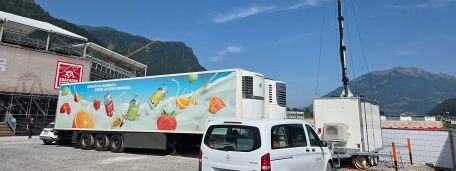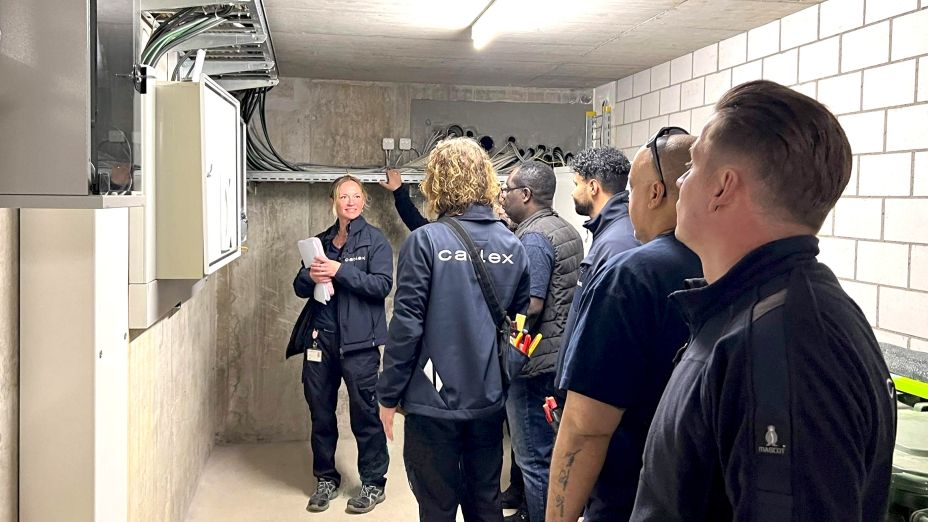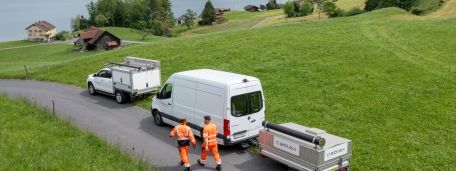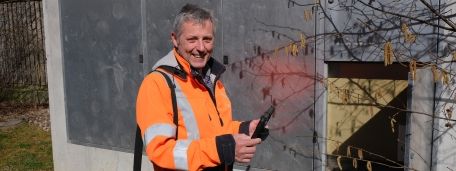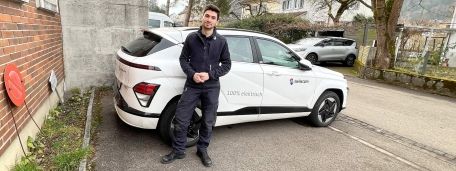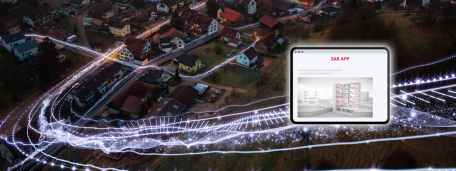
The images taken by an underwater drone confirmed cablex's assessment: the large quantities of mud and debris that had accumulated over the underwater line meant the optical fibre cable between Maroggia and the opposite shore was under a lot of strain.
"This can cause problems that impair the functioning and service life of the optical fibre cable. The razor-thin fibres inside the cable are sensitive to tensile stress, and excessive strain can cause them to break, which completely disrupts signal transmission," explains network construction specialist Carmelo Criscione.
A new optical fibre cable is installed in Lake Lugano.
A failure of the underwater cable, which would lead to a break in the optical fibres and thus to an interruption in signal transmission, would have a significant impact on the community of Brusino Arsizio, causing a network outage in the area. Proactive measures have been taken to prevent this scenario: Three new fibre optic cables with 480 fibres were installed in the lake. This ensures that the connection between Vico Morcote and Brusino Arsizio has the capacity to meet long-term needs
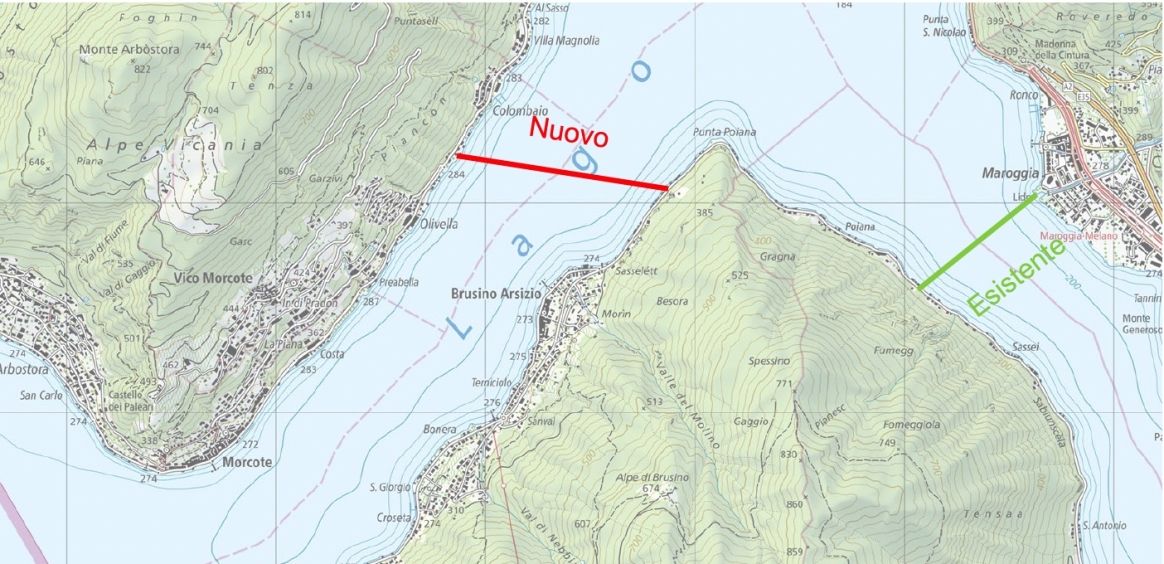
The challenges of pulling cables under water.
Even for an experienced network construction specialist like cablex, laying underwater cables is an exceptional project. These special cables have a robust sheath that reliably protects them from the effects of water. Both the cables themselves, as well as the preparation before splicing and the sleeves used, differ significantly from the optical fibre cables that cablex uses in day-to-day network construction.
To ensure maximum precision and efficiency, cablex, in its role as project manager and general contractor, commissioned a specialised company with extensive expertise in the laying of underwater cables.
Construction of an underwater bridge to cross a gas pipeline.
In addition to the three new optical fibre cables, a power cable from the regional electricity company, AIL SA (Aziende Industriali di Lugano), was also laid. This presented the project team with an additional challenge: a gas pipeline runs through the centre of the lake, which had to be bridged safely as the cable was being laid. Building and installation regulations stipulate strict minimum distances and specific insulation requirements in order to reliably avoid risks such as short circuits or corrosion damage.
To meet these requirements, a stable cable bridge was installed above the gas pipeline at a depth of 100 metres, allowing both the optical fibre and power cables to be laid safely.
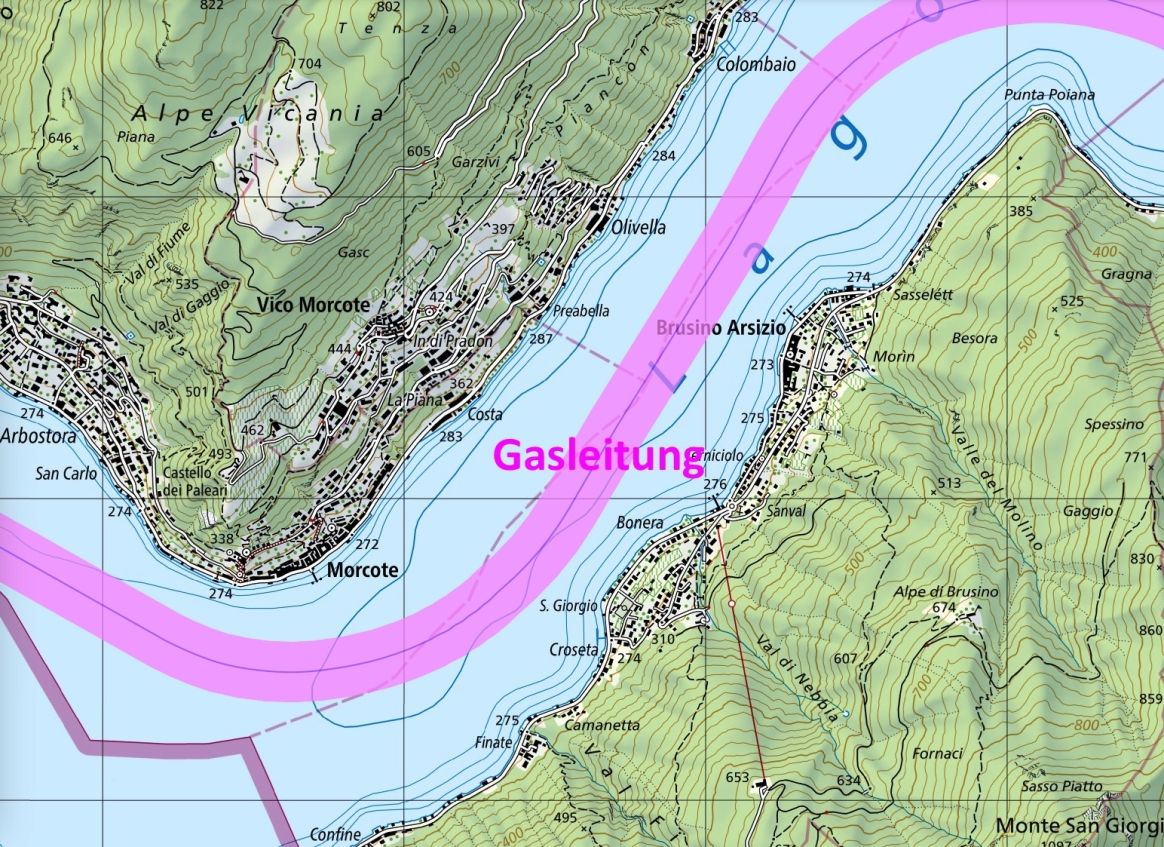
The new underwater cable currently ends in the first shaft on both sides of Lake Lugano. In the next stage of the project, it will be spliced with the local exchange on the Vico Morcote side. On the Brusino Arsizio side, the cable is being spliced with the existing connections, while the community remains connected thanks to Fibre to the Street (FTTS). As soon as the connection via the new cable has been successfully put into operation, the old, damaged underwater cable will be removed.
cablex managed the coordination between various subcontractors and the electricity company. As the general contractor for Swisscom, cablex carried out all activities, from planning to installation. Carmelo Criscione was responsible for the site management.
With the successful laying of the new underwater cable and the upcoming splicing work, the community of Brusino Arsizio will benefit from a stable and modern network infrastructure in the long term. The proactive measures taken by cablex show how important it is to adapt networks to growing requirements and potential risks at an early stage. The dismantling of the old, damaged underwater cable highlights the sustainable approach of the project. This investment in the future ensures that Brusino Arsizio remains reliably connected – an important foundation for digital development and the everyday lives of local people.









